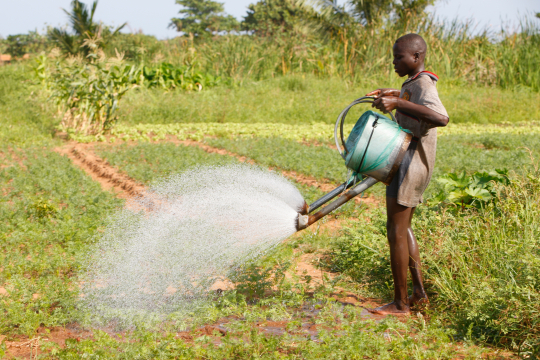Farmers in West Africa practice many climate change adaptation strategies numbering about 91. However, only a few of the strategies are cost effective. When trying to cope with the impact of climate change, the farmers should focus more on planting of trees, use of fertilizers, use of resistant varieties, mixed farming, crop diversification and mulching.
Abstract
Agriculture is extremely vulnerable to climate change. Changes in precipitation and temperature patterns will result in long-term declines in production and short-term crop failures. These short- and long-run impacts are projected to be particularly severe in developing countries because of high exposure to climate change impacts and dependence on rain-fed agriculture. To overcome the challenges of a changing climate on agricultural production in West Africa, farmers implement a range of adaptation strategies. Using a systematic review of spatial–temporal empirical literature published on climate change adaptation in the West African ecological region and data collected from semi-structure interviews to farmers, we identified adaptation strategies in West Africa and explored their efficiency computing their cost–benefit ratio to examine farmers’ private returns per dollar spent. Our results show that 91 adaptation strategies are employed by farmers in the sub-region, classified into six categories: cultural practices, forest management strategies, land management practices, water management strategies, risk management strategies and the use of improved technologies. Our results show that planting of trees, increased use of fertilizers, use of resistant varieties, mixed farming and crop diversification are the strategies that generate the highest returns, with highest annual mean net benefits. Mulching was also found a financial attractive as it generates the greatest returns per dollar spent ($3.2) and internal rate of return due to its low associated cost. The adaptation options that generate net mean annual losses were water harvesting, erosion control and making of big mounds. In a scenario with a 10% annual increase in annual benefits and costs over a period of five years, all the adaptation strategies, apart from water harvesting, will yield positive net present value benefits for the farmers. Since any climate change adaptation will inevitably have heterogenous financial implications to farmers, result from this study sheds light on farmers’ private incentives to embark on adaptation strategies and provides information needed for decision support on adaptation measures choice selection, policy and planning across the sub region with relevance to other areas.
Keywords Efficient adaptation · Climate adaptation · Nigeria · Agriculture




